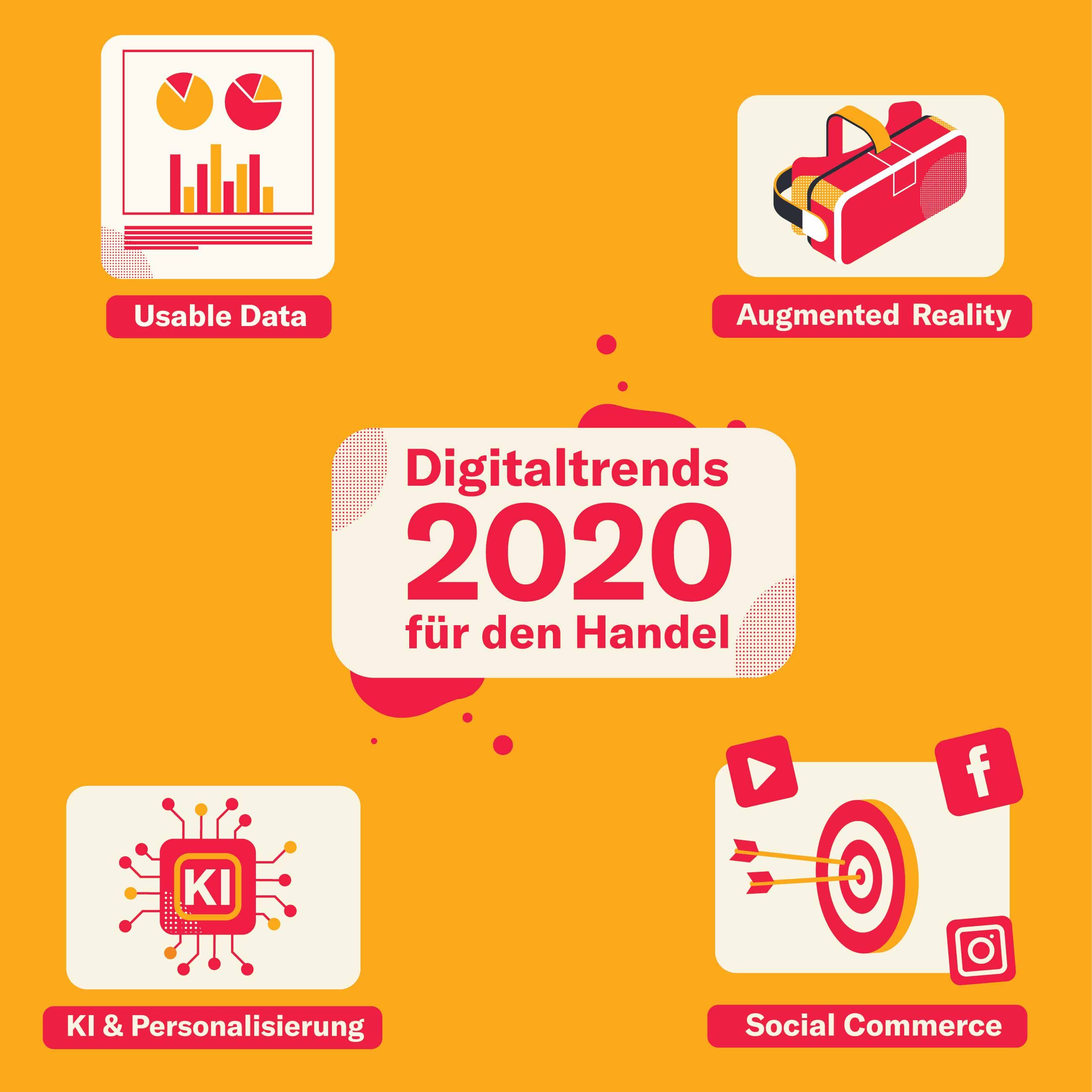Digital trends 2020 for retailers
These digital developments and technologies are crucial for the competitiveness of retailers

St. Gallen / Frankfurt, 21st January 2020 - The new year has hardly begun when the trend reports on digital developments in the retail sector are already overflowing. Namics, one of the leading Swiss full-service digital agencies, has not only examined the trends for 2020, but also knows how to implement them in practice: What should retailers and marketing focus on and what do they need to consider when implementing them? Holger Neckenbürger, Account Director and digital marketing expert at Namics, explains this and goes into four important areas.
Trend 1: From Big Data to Usable Data
Retailers have now understood the importance of data. Large amounts of data are already available. But Big Data only helps if the data is interpreted correctly. Silos and the black box in which many algorithms work make this difficult. The overall goal is to break up and merge existing data silos. Because only those who collect data in a goal-oriented manner and make it usable will be ahead of the competition.
"It's better to use a simple solution that you've mastered than a big one that's not manageable internally," recommends Neckenbürger. Algorithms should be as individualized as possible and defined by the company itself in order to better understand them and at the same time consciously reduce black boxes. The data and evaluation authority should also be in-house. System integrations are another important point, i.e. the use of holistic technological systems for the optimal use of all available data. "At one of our customers, for example, we implemented a self-service platform that supports campaign managers in controlling and optimizing their measures by consolidating different data sources and making them accessible to everyone," says Neckenbürger.
Trend 2: Augmented Reality on the rise - how will this trend establish itself further?
Augmented Reality (AR) offers retailers the opportunity to emotionalize the product as well as the buying experience at the POS or at the customers' homes. In addition, the topic of consulting plays an important role. Using AR, customers can, for example, "try on" items of clothing at home or manufacturers can present their building instructions for furniture simply and clearly.
First movers are in demand here, offering end customers initial apps to optimize the buying experience. According to Neckenbürger, two factors must be taken into account here:
- Easy to use: The AR must be simple and uncomplicated to use so that it creates acceptance among customers.
- Technology: The application must be technologically mature enough to offer a good user experience on every customer's end device.
Namics has, for example, developed a prototype for an AR app that allows end customers to view various bathroom accessories, such as a shower head, as a possible element in their own home before buying.
Trend 3: Social media in change - social commerce, influencer marketing and new channels
Social media in itself is no longer considered an innovative trend. However, new potential is emerging within the social media universe. According to Neckenbürger, the following developments deserve special attention:
- Social commerce and social shopping are becoming an important part of the retail sales mix.
- Influencer marketing continues to increase in importance in order to position products authentically and increase communication about the product.
- New channels like TikTok are gaining market share and gaining relevance in the channel mix.
- Big Data and AR are increasingly influencing social media and are ensuring that within the
Channels for added value and thus also for new consumption triggers.
What does this mean for retailers? Social media is changing - and companies should do the same. In concrete terms, this means expanding the (existing) social media strategy with regard to these trends. "To do this, retailers must evaluate new channels, products, apps and skills, determine their potential for their own company and use new advertising and placement opportunities," says Neckenbürger. "The key is to prioritize rather than dilute. Beta tests and comprehensive cost-benefit analyses allow the potential to be taken into account.
The difficulty in influencer marketing will be to attract the right ones to the increasing number of influencers. Here companies should explore well and convince the top influencers of the cooperation. And, of course, it's all about using first-mover effects - especially with emotional products.
Trend 4: Next-level personalization through artificial intelligence
Artificial intelligence will help to offer customers even more personalized and needs-oriented products. Smart home devices and voice search, for example, are playing an increasingly important role. Retailers can take advantage of this development and use it to open up new channels and sales opportunities: for example, via smart avatars that advise customers before they buy based on collected and intelligently linked data. Amazon Echo Look is leading the way.
"My tip for retailers is above all: Have the courage to break new ground," says Neckenbürger. Retailers should analyze the new possibilities offered by AI and smart home devices like Echo and develop creative ideas to address customers individually. Because this is where companies can still generate first mover effects. When planning and creating the personalization strategy, they should not only consider the approach and the degree of personalization, but also the technological requirements. "I recommend beta testing to analyze the effects first and then adjust skills, personalizations, etc. as needed," says Neckenbürger.




